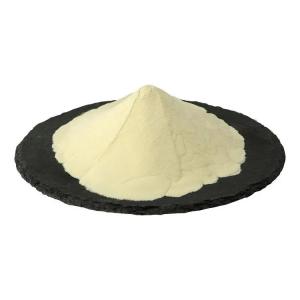Phosphatidyl serine is formulated in soup cubes.
Time:2025-08-14Soup cubes are concentrated seasoning products that dissolve in hot water to produce a flavorful broth or soup base. They typically combine salt, fats, seasonings, and stabilizers into a compact, shelf-stable form. Incorporating phosphatidylserine into soup cube formulations can provide functional benefits during manufacturing and storage, as well as support consistent product performance in cooking.
Ingredient Overview
Phosphatidylserine is a phospholipid naturally found in plant and animal cell membranes. Commercial production usually involves extraction and enzymatic modification of soy lecithin or sunflower lecithin. In food applications, it is available as a fine powder or oil-dispersible ingredient, making it adaptable to both dry and semi-moist formulations.
Functional Role in Soup Cubes
When used in soup cubes, phosphatidylserine can contribute to:
Emulsion Stability – Helps bind fats and aqueous components, ensuring an even distribution of flavors and seasonings.
Texture Uniformity – Supports a smooth, cohesive cube structure without separation of oil or moisture.
Flavor Retention – Its lipid-binding properties can help preserve volatile flavor compounds during storage.
Improved Dissolution – Promotes faster and more uniform dispersal when the cube is added to hot water.
Formulation Approach
Phosphatidylserine is typically added during the blending phase, where fats, seasonings, and salt are combined. In fat-based soup cubes, it can be pre-mixed with oils or shortenings before being combined with dry seasonings. In low-fat or dry-pressed cubes, it may be blended directly with powdered ingredients. The inclusion level generally ranges from 0.1% to 0.5% of the total weight, depending on the cube’s composition and processing method.
Compatibility with Other Ingredients
Soup cubes commonly contain vegetable fats, salt, dehydrated vegetables, yeast extract, starches, and spices. Phosphatidylserine is compatible with these ingredients and can be used alongside other emulsifiers or stabilizers such as lecithin, mono- and diglycerides, or modified starch.
Processing Considerations
Soup cube production typically involves blending, compacting, and shaping under controlled heat and pressure. Phosphatidylserine remains stable under these conditions and does not require special handling beyond standard dry ingredient management. For optimal dispersion, it should be evenly mixed before the mass is molded into cubes.
Product Positioning
From a marketing perspective, the addition of phosphatidylserine can align with trends toward premium or specialty seasonings. It may be included in the ingredient declaration as part of a phospholipid blend or by its full name, depending on regional labeling requirements.
Conclusion
Phosphatidylserine can play a valuable functional role in soup cube production by enhancing stability, improving texture, and supporting consistent dissolution. Its versatility makes it suitable for a wide range of cube formulations, from traditional meat-flavored varieties to plant-based and low-sodium options.


 CN
CN





